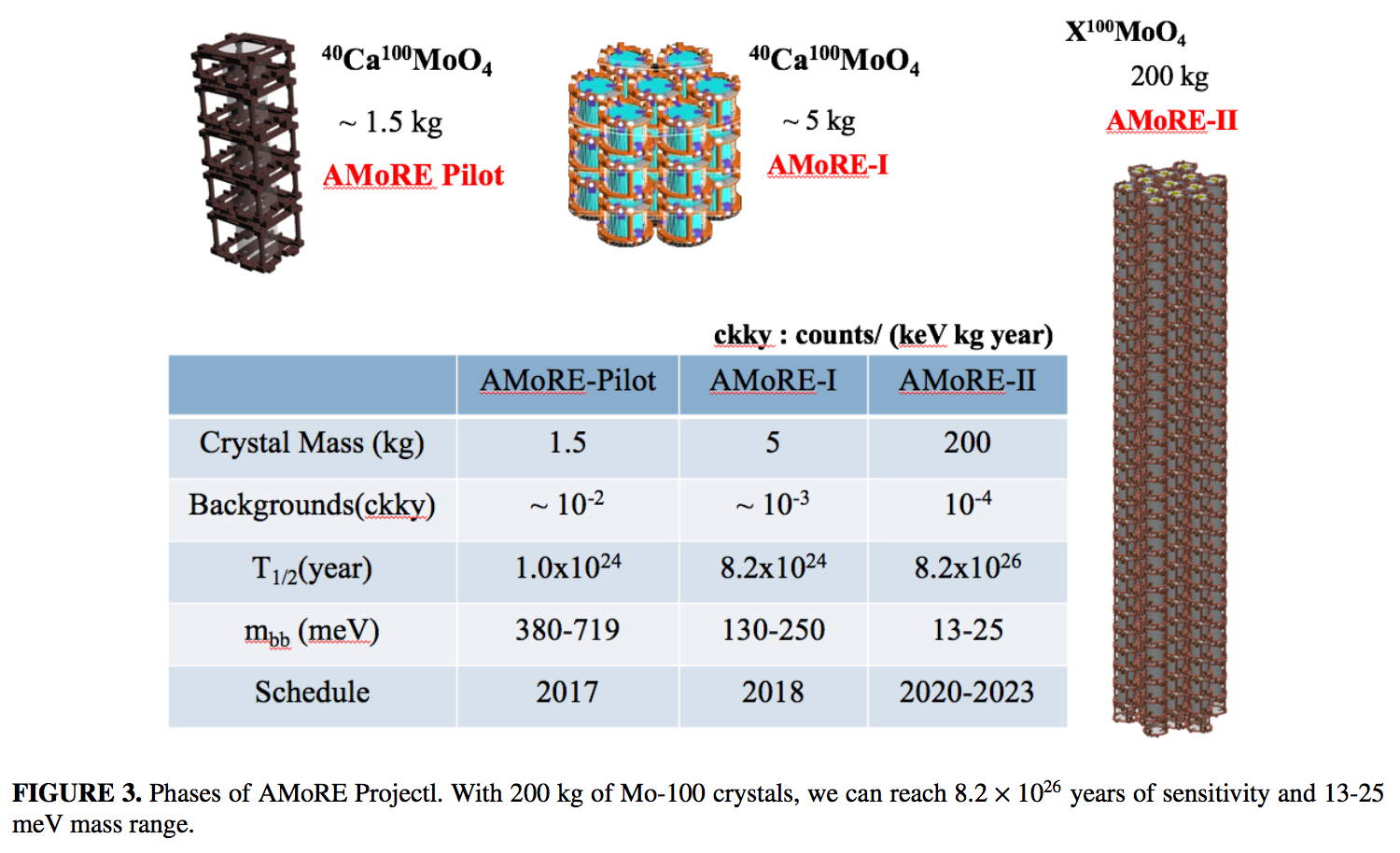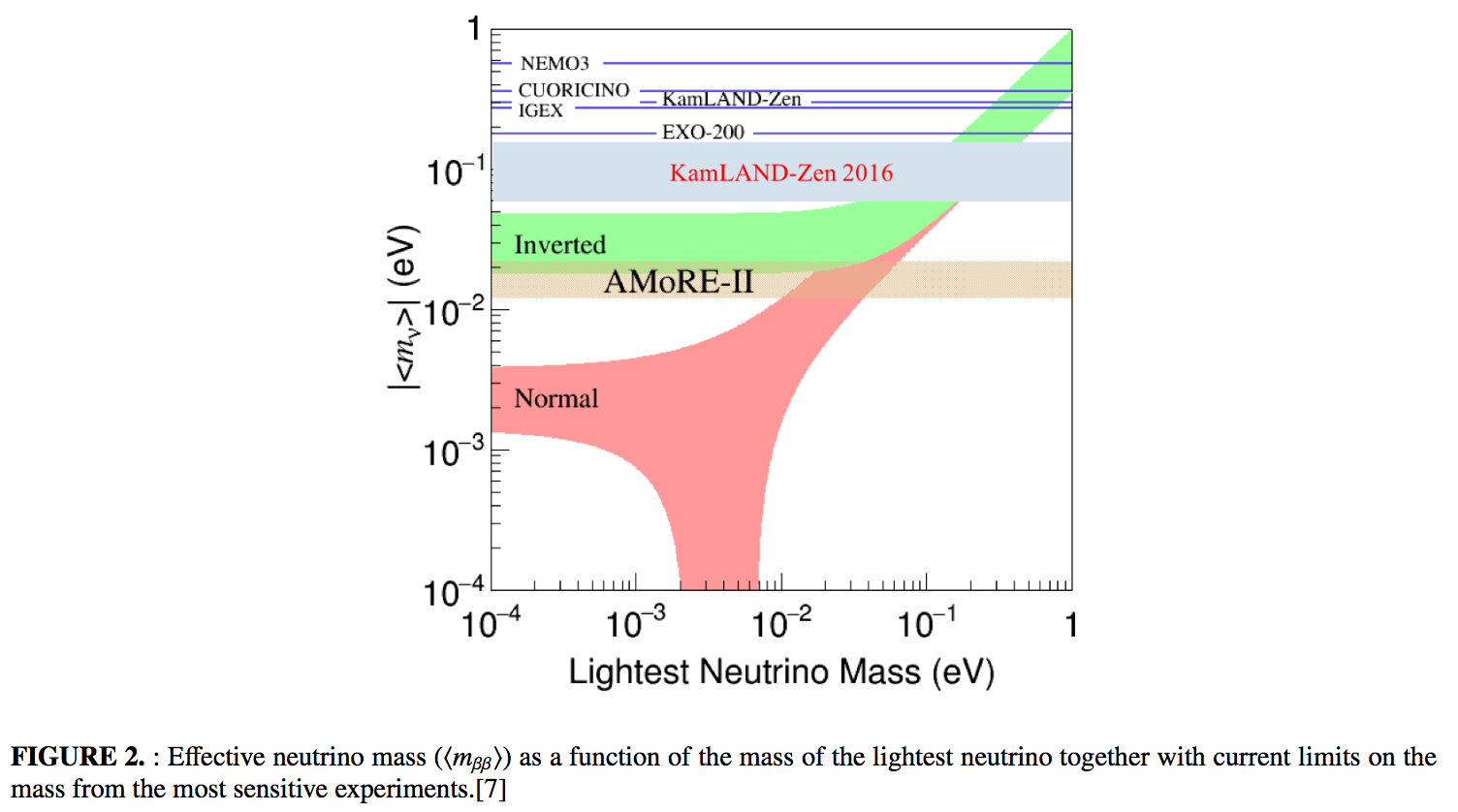The AMoRE experiment aims to search for 0νββ decay of 100Mo nuclei using molybdate scintillating crystals operating at milli-Kelvin temperatures. The ultimate goal of the experiment is to achieve a sensitivity that covers the entire ⟨mββ⟩ range that is allowed by the inverted neutrino mass hierarchy. This will require advancing the current states-of-the-art in background rejection, radio-pure crystal growing, and cryogenic radiation detector techniques. To accomplish these ambitious goals, we have formed an international team of researchers that includes experts in each of these areas and plan on using a phased approach that starts with modest experiments with current state-of-the-art technologies and advance from there. AMoRE collaboration is working on R&D efforts in pure crystal growing, cryogenic detection and background suppression, and step-wise approach to a full experiment with a 200 kg detector.

Phases of AMoRE Project
Figure 3 shows the phases of the AMoRE project. Finally we will run 200 kg of XMoO4 crystals at about 10 mK temperature. Here X can be 40Ca, Li, or Na atoms. We are taking data using 6 40Ca10MoO4 crystals with a total mass of 1.5 kg at Yangyang underground laboratory (Y2L). It will be upgraded to about 5 kg in year of 2018, and 200 kg of crystals will be run in year of 2020 at a new underground laboratory using a water shielding tank. The energy resolution will be better than 10 keV in FWHM, and the total background rate at the region of interests, around 3043 keV, will be reduced lower than 1×10−4counts/(keV·kg·year). Both the phonon and photon signals for each crystal are analyzed to reduce the backgrounds from bulk and surface alpha backgrounds. The low temperature phonon sensors are Metallic Magnetic Calorimeter (MMC) for both phonon and photon signals.
The main backgrounds are 208Tl decay inside the crystal due to the high Q-value of this decay, 4.999 MeV. Vikuiti reflector film, surrounding materials such as copper and MMC sensor materials [12] also should be clean in 228Th. Because AMoRE-II experiment with 200kg of the crystals aim to have “0” backgrounds for 5 years of data collection time, the requirements on the background is very severe. We have a strategy to achieve this goal.
First, we will develop ultra-sensitive ICP-MS techniques to measure 232Th and 238U at the level of 0.1 ppt. This limits can be achieved by extracting U, Th isotopes from the material using chromatography and measure with the current ICP-MS. This technique can be very sensitive because the sample prepared will have no basic material (matrix) which limits the sensitivity of the ICP-MS. Another isotope we have to reduce to achieve low level of 208Tl is 228Ra. The ultra-low level of this isotope can be evaluated indirectly by measuring Ba elements because Ba and Ra are in the same chemical family.
Second, we will identify all materials and make sure the radioactivities are lower than the limits we can estimate to satisfy the total background requirements for AMoRE-II. Both ICP-MS and HPGe detection system will be used for these measurements.
Sensitivity

The projected sensitivity of a five-year exposure with AMoRE-II would be T1/2 ~ 1×1027 years ( ~ 20 meV). Figure 2 compares the projected sensitivity with the inverted neutrino hierarchy region and existing limits. Such a sensitivity will require exquisite energy resolution and an order-of-magnitude improvement in background rejection power.